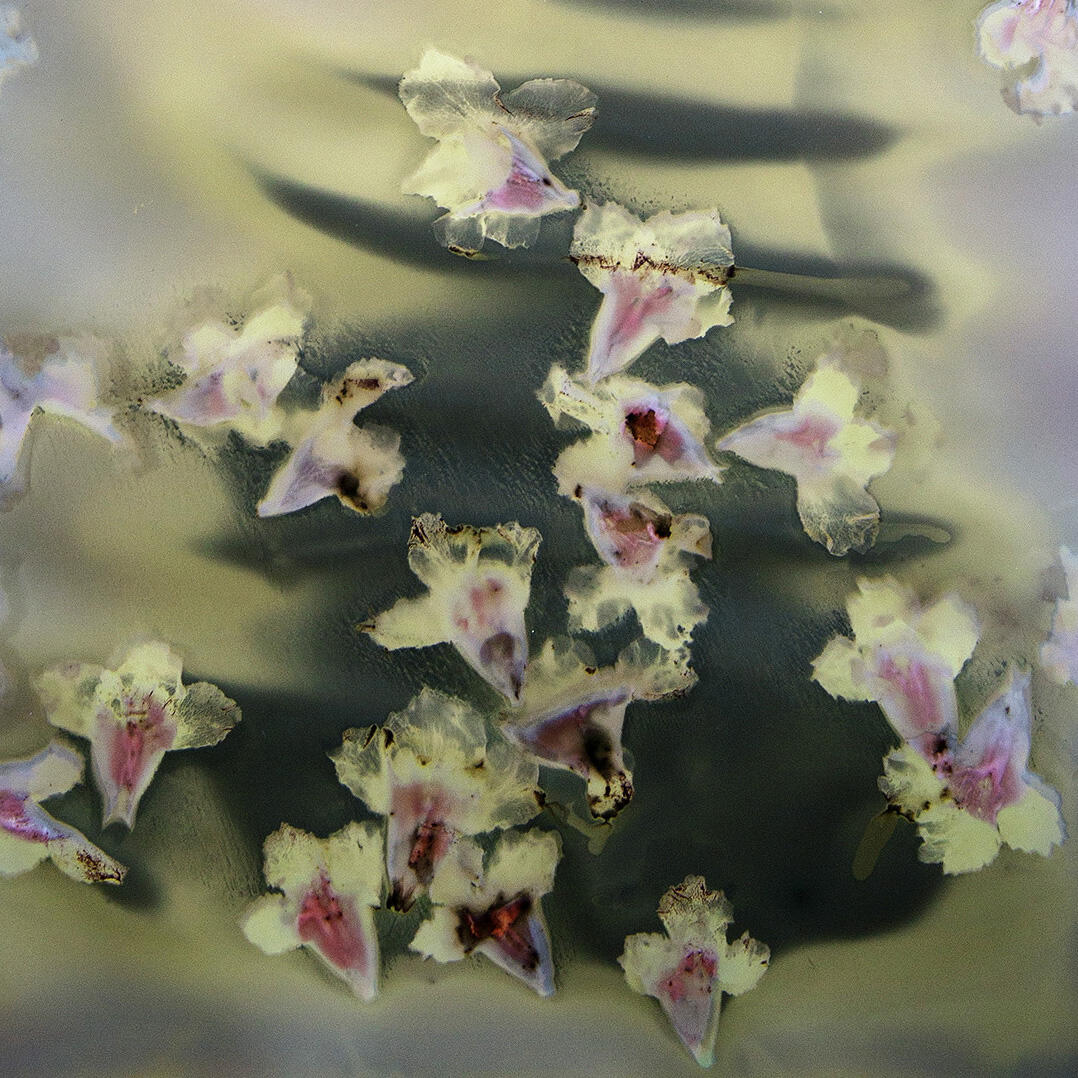Semester:
Offered:
Session 2: March 25 – April 29 (6 classes)
Day/Time: Thursdays, 6:30pm – 8:30pm ET
Level: Intermediate – Advanced
Instructor: Ann Eder
Course Description: Take your plant-based printing processes to the next level with this follow up course to the Plant-based Printing Intro class! Explore further the possibilities of printing with plants and using chemistry found in common household items. We will investigate the infinitely variable lumen and phytogram processes combined with non-traditional applications of chemistry you can make at home, as well as finding ways to take anthotypes and chlorophyll printing forward. We will meet via online once a week for demonstrations and students will then take what they have learned and complete that week’s assignment, returning for troubleshooting, critique and a new demo each week. Most items needed to take this course should be easily obtainable from the backyard, a nearby park, or even the grocery.
Pre-requisite: Plant Based Printing Processes I or proficiency in anthotype, chlorphyll printing, lumens, and phytograms. If you are unsure whether you meet the pre-requisite, please email jikim@fas.harvard.edu.
With your registration, you will receive access to a Harvard Google Classroom which will provide a place for discussion, sharing of ideas and will feature recordings of each class. In the case you miss a class or would like to review, these recordings will be available for 30 days after the end of the course.
Suggested Materials:
SUGGESTED MATERIALS FOR ADVANCED CLASS IN PLANTBASED PRINTING
All processes will need a dim room to coat emulsions using low tungsten light. For lumens, best in very low light or under a red safelight.
You will need the same items you used for the intro class with a couple additions. I am sure you probably have leftovers from the intro class. For those who were not in my intro class I am attaching that list at the bottom.
OPTIONAL additional photographic chemistry:
One cyanotype chemistry kit
(powder) https://www.freestylephoto.biz/070090-Formulary-Cyanotype-Powder-Kit-1-Liter
(liquid) https://www.freestylephoto.biz/070091-Formulary-Liquid-Cyanotype-Kit-1-Liter
Also available here:
---AND/OR---(YOU MAY ALSO SUB HOUSEHOLD CHEMICALS)
--OR—
Halochrome
Available here: https://www.freestylephoto.biz/18383-Rockland-Colloid-Halochrome-(Makes-64-oz.)
And here: https://rockaloid.com/Halo-Chrome-quart
These kits do very different things. If you have questions, please email me.
Feel free to purchase one or the other, or both. I will demonstrate use of both in combination with lumen printing. However, common household compounds such as salt, sugar, lemon juice, and other chemicals you have on hand may also be used to affect changes in texture and color. It depends on your budget and how deep into this you want to go!
Small bottle of tincture of iodine, available from most drug stores.
Fixer : Sodium thiosulphate crystals (old school photographic fixer) available here:
and here:
https://www.bostick-sullivan.com/cart/433.html
From Intro class:
- Substrates—any good watercolor paper will usually work well, but consider fabric, nonglossy ceramic, wood, or other surfaces.
- A means of extracting juice from plants—juicer, blender, mortar and pestle—any of these will work.
- Denatured alcohol (Everclear or vodka will work!).
- Salt.
- Cheesecloth or fine sieve.
- Foam or regular brushes for applying emulsion. Small trays for dipping optional.
- A contact frame or some pieces of glass (tape the edges for safety, rigid cardboard or equivalent for backing, clamps or clips, tape, or old glass photo frame (no UV glass—we want those UV rays!)
- Assorted blossoms, petals, leaves, roots, veggies, etc for juicing.
- Transparency sheets. These can be drawn on or run through a printer. If you cannot get transparencies, objects may be used such as leaves or flowers or other material that can be flattened for contact with the paper, or you can make a waxed paper transparency (we will discuss this in class).
- If you have them, small water vials are helpful.
- Black and white photo paper, any size any finish, short date or expired is okay, as well as fresh of course. Film, either sheet or roll, any size.
- For making chemistry: vitamin C (ascorbic acid), washing soda (soda ash or sodium carbonate), instant coffee.
Optional:
- Polyester resin, surfboard resin, etc
- Artist wax
- Spray Varnish with UV protection
- Wood, foam core, cardboard, adhesives, and other building materials as suit your plans. We will discuss in the first class.
Clay and Material Purchases
This course fee covers instruction only. Participants are responsible for obtaining their own clay. Here is the list of available clays, tools and materials at the Ceramics Program. You can also purchase the supplies at your local art supply store or online. If you would have questions, please email Ji-Eun Kim directly at jikim@fas.harvard.edu.
Glazing and Firing Services
Registered students are welcome to drop off, fire and glaze your ceramic work through the Harvard Ceramics program. We charge 3 cents per cubic inch for all firings (bisque and glaze). We offer electric kiln (Cone 06 for bisque, 6 for glaze), high fire reduction and soda vapor firings (Cone 10). Specialty firing temperatures can be arranged. At the end of each session, you will be invoiced for the cost of your firings.
Course Fees: Free for Harvard College Undergraduate Students; $300 for Harvard Graduate Students, Harvard employees and Adult Community.
Registration will begin on Monday, December 14th at 11:00 AM EST
For questions regarding course content, policies or materials, please contact Director, Kathy King.
For questions regarding registration, please contact Administrative Coordinator, Ji-Eun Kim.
Location: Zoom